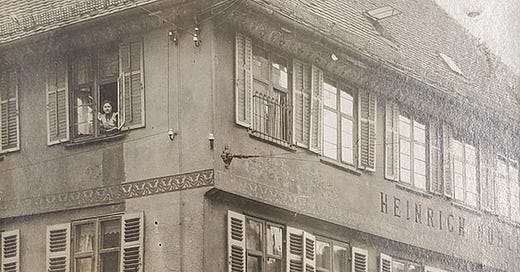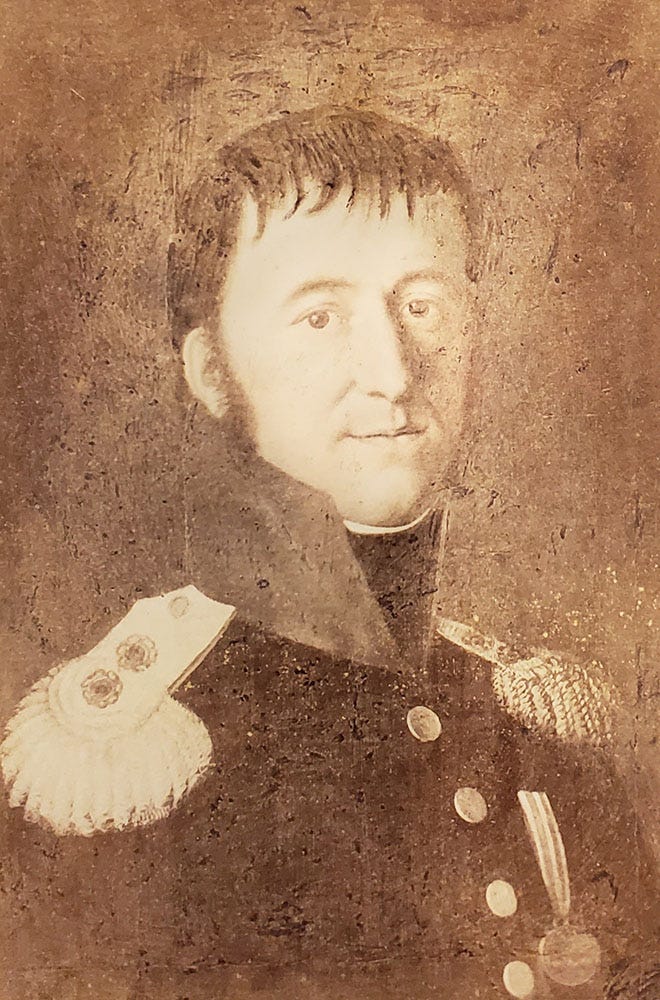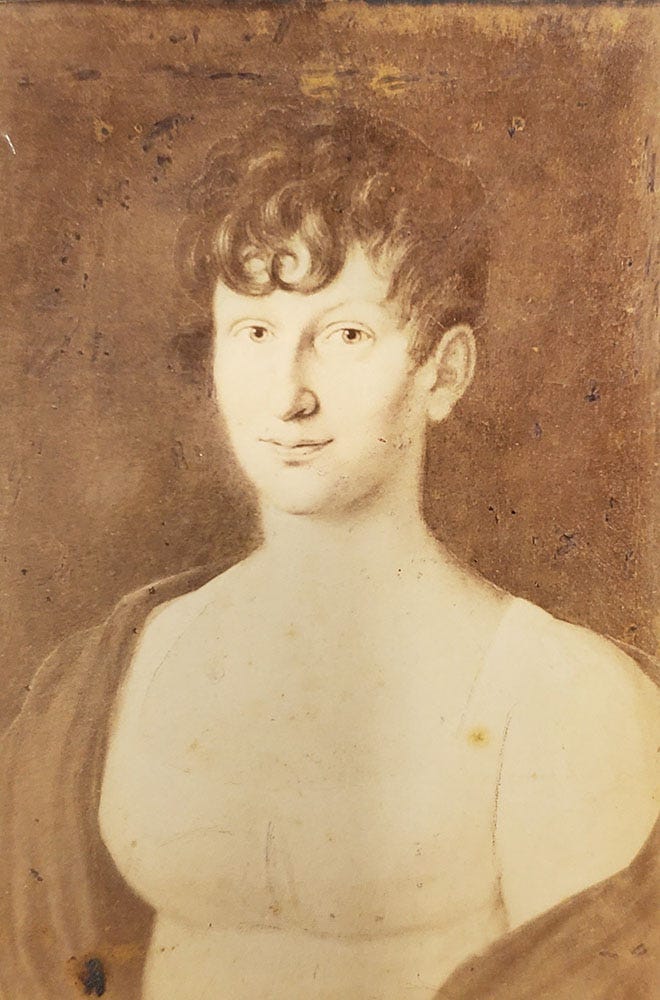Well, we’re back stateside after our little adventure.
One of the places we visited was the city of Ulm in Germany. This was the birthplace and childhood home of Thekla Nübling — yeah, that Thekla Nübling.
Der Herkunft
The background information
According to her one of her daughters, Anna Dobbs,
Thekla was born in the city of Ulm […] during the siege of the city by Napoleon Bonaparte. She was born in the cellar of the home, where her mother and family had gone for safety during the siege.
Thekla immigrated to the New World in the 1800’s and settled in Louisiana, but the rest of the Nübling family that remained in Germany continued to produce locally-influential, middlingly wealthy members up to WWII.
Das Stadtarchiv
The city archives
The family papers were donated to Ulm’s Stadtarchiv in 2016. I was able to arrange a visit there one morning before we had to catch a train to our next destination, and I got to see several items from the Nübling collection, including several papers that I think will be helpful with genealogy research.
Of the more interesting things I saw were these portraits of Thekla’s parents, my 5th great-grandparents, Theodore Ulrich Nübling and Sybille Jacobin Höll. Well, really they’re photographs of painted portraits, but the fate of the original paintings remains a mystery.
Das Hirschstraßehaus
The house on Stag Street
There were also some documents regarding a property located on Hirschstraße near the Münsterplatz — the medieval city center surrounding the Münster — which the family purchased as a combination home and business when Thekla was about 5 years old.
I have already shared one of Thekla’s sketches of the house, but there was also an actual photo of the place from the late 19th or early 20th century included in the family collection.

And we actually found the address! The original building was badly damaged in WWII, so it doesn’t look quite the same these days, but now it houses some apartments, a bank, and an ice cream shop. (Yes, I got an ice cream cone, and yes, it was delicious.)
Die Küche
The cuisine
Almost everyone has some favorite family recipes, passed down from generation to generation, which represent a very practical, tangible piece of personal history. However, Thekla’s favorite foods (well, other than bread and butter) have been lost over the centuries — which is why I was particularly keen on trying some traditional Bavarian/Swabian dishes and drinks.
One of the most memorable foods we tried was maultaschen, which are kind of like giant ravioli or mini meatloaf-dumplings. I think I’d like to try making some version of these here at home. There was also an abundance of spätzle, little eggy pasta bits served as a side dish with practically anything. At Oktoberfest we also got to try käsespätzle, which was kinda like mac’n’cheese but made with those spätzle noodles.
In Munich we accidentally tried some baloney-like leberkäse — we thought we were ordering a type of bratwurst! — with a side of potato salad, kartoffelsalat, plus some local spicy-and-sweet mustard. Then, of course, there was a beautiful abundance of fresh pretzels, or bretzn.
I can’t tell you how much fun it was to visit these places and taste these new foods and feel a real sense of connection to my family history.
We also visited a place that was significant in Gary’s family history, which I’ll cover in the next newsletter.




